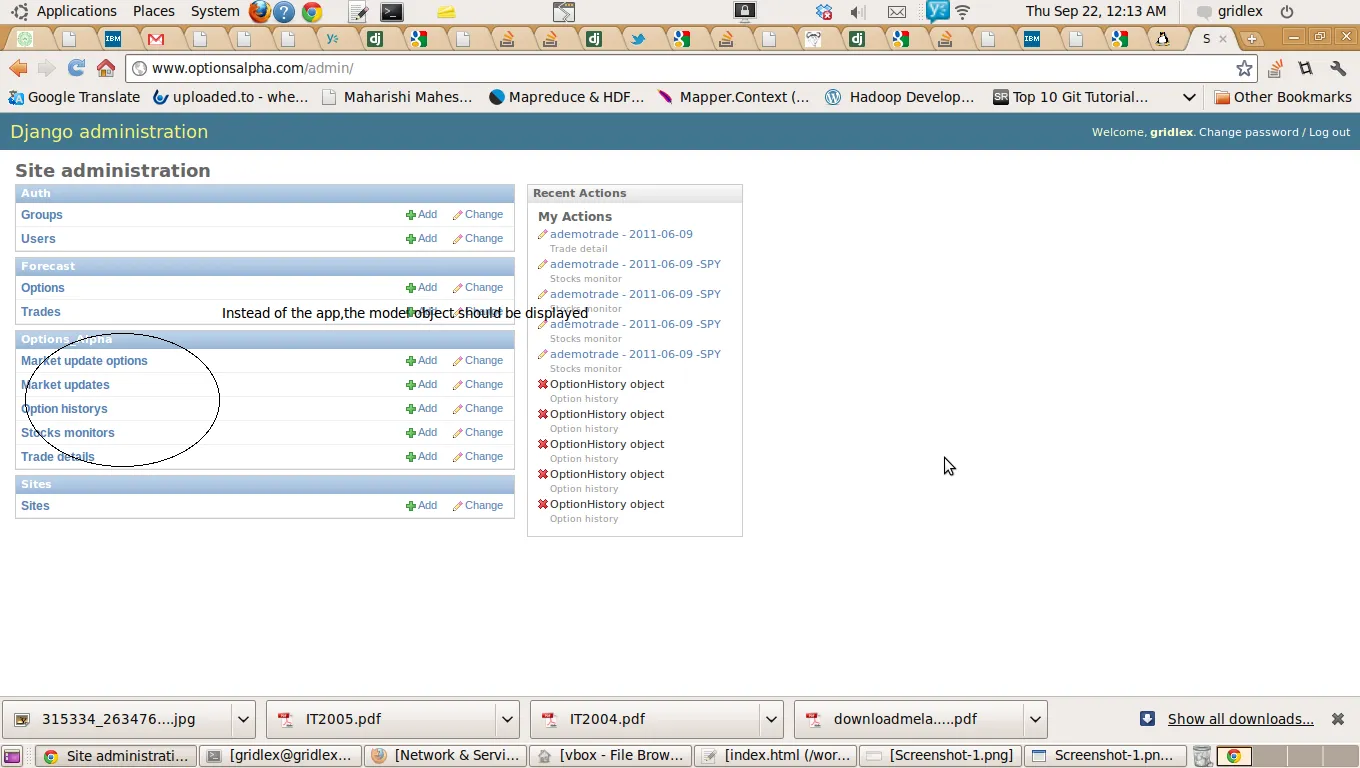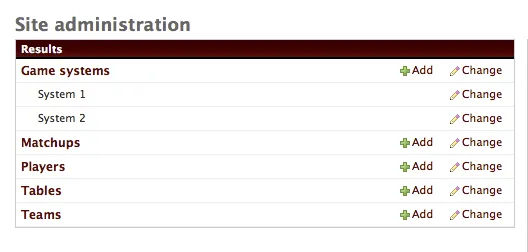
定制Django管理页面的索引页以显示模型对象
我希望在我的网站上实现相同的功能,并通过对Django核心系统进行轻微修改来添加它。
步骤1: 首先,我们需要一种方法来指示哪些模型应列出其属性。将以下代码添加到要列出实例的模型(在models.py中)中:
class Meta:
list_instances = True
步骤2:我们需要修改Django以识别并读取这个新属性。在核心的Django文件db/models/options.py中,大致在第22行将'list_instances'追加到DEFAULT_NAMES列表中:
DEFAULT_NAMES = ('verbose_name', 'verbose_name_plural', 'db_table', 'ordering',
'unique_together', 'permissions', 'get_latest_by',
'order_with_respect_to', 'app_label', 'db_tablespace',
'abstract', 'managed', 'proxy', 'auto_created', 'list_instances')
并且在同一个文件中,大约在第52行,在其他属性之后为该属性创建一个默认字段:
self.list_instances = False
第三步: 我们需要将这些信息传递给生成索引页面的模板。在core-django文件contrib/admin/sites.py中,在index()方法和"if has_module_perms:"部分内部添加以下代码:
instances = []
if (model._meta.list_instances == True):
instances = model_admin.queryset(None)
如果设置了list_instance属性,这将创建要显示的实例列表。在同一文件中,在几行代码之后,将这些值附加到“model_dict”构造中。
model_dict = {
'name': capfirst(model._meta.verbose_name_plural),
'admin_url': mark_safe('%s/%s/' % (app_label, model. __name__.lower())),
'perms': perms,
'list_instances':model._meta.list_instances,
'instances': instances,
}
第四步: 最后一步是修改模板以支持此功能。要么编辑核心Django文件/contrib/admin/templates/admin/index.html,要么将此文件复制到特定应用程序的templates/admin/目录中。在生成行的标准代码之后添加几行代码来生成“子行”(如果适用)。大约在第40行,在“/tr>”和“{% endfor %}”之间:
{% if model.list_instances %}
{% for instance in model.instances %}
<tr>
<td colspan="2" style="padding-left: 2em;">{{ instance }}</td>
{% if model.perms.change %}
<td><a href="{{ model.admin_url }}{{ instance.id }}/" class="changelink">{% trans 'Change' %}</a></td>
{% else %}
<td> </td>
{% endif %}
</tr>
{% endfor %}
{% endif %}
这将导致该项在模型中以由 unicode() 方法生成的名称列出。
第五步: 哇!它应该看起来像这样:

编辑: 可选的第六步: 如果您也希望实例名称可点击,请更改模板(index.html)并替换为:
<td colspan="2" style="padding-left: 2em;">{{ instance }}</td>
使用:
<td colspan="2" style="padding-left: 2em;">
{% if model.perms.change %}
<a href="{{ model.admin_url }}{{ instance.id}}">{{ instance }}</a>
{% else %}
{{ instance }}
{% endif %}
</td>
3
更新Setomidor对Django 10的答案
很高兴能回到这个简洁的解决方案!
第二步 - 大约在第125行(之前是52行)
第三步 - 在sites.py中更新新方法 -
_build_app_dict
在for循环内部:for model, model_admin in models.items():
根据第430和460行附近所说,添加第3步骤。
instances = []
if (model._meta.list_instances == True):
instances = model_admin.get_queryset(None)
app_index.html,控制着在那里显示的内容。最好的方法是安装django-debug-toolbar,然后查看每个视图使用的模板,以找出如何自定义的方法。1
原文链接